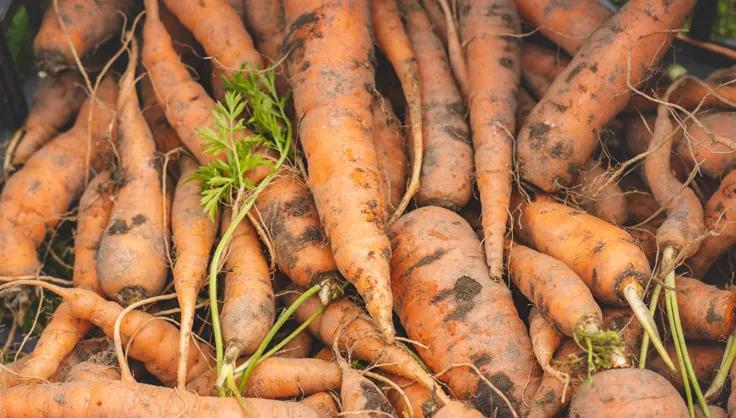How to Store Carrots
Keep your carrot crop fresh!

For winter storage, choose carrot varieties known to be good keepers. Vegetables store best when they're harvested at — not past — maturity. In most areas, this means that crops intended for winter storage are not sown until late June or July.
To maintain good eating quality, carrots need to be kept at a constant temperature between 32-40 degrees F, and at 90-95 percent humidity. There are three ways that home gardeners can provide these ideal storage conditions: in a refrigerator, in moist sand or right in the garden.
To store these crops in a refrigerator or in sand, start by harvesting the roots. Handle them gently to avoid bruising or nicking. Use scissors to cut off all but 1/2″ of the foliage. Rub the roots gently but do not wash them in water to remove soil — this will only encourage mold growth. Don't cut off the root end because this will invite decay.
Storing Carrots in a Refrigerator
For refrigerator storage, lie similar-sized, same-variety vegetables in a single layer in gallon freezer bags. Remove as much air as possible before sealing each bag. Stack bags flat on a shelf or in a drawer in the refrigerator. Check monthly for decay and use those first. Should there be fine root hairs or a little decay, simply peel this off; the root itself will be fine. Carrots will get wiggly and a little soft if they lose a lot of internal moisture, but they are still acceptable to eat. Carrots can be shredded raw into salads, or can be steamed, roasted, or added to soups.

The Root Storage Bin
Storing Carrots in Sand
A second technique is to store these crops in moist sand. Prepare the roots as above. Moisten clean sand in a large container or wheelbarrow. Pack the vegetables into a tub, wooden box, 5-gallon bucket, plastic-lined cardboard box, or a Root Storage Bin. Start by placing several inches of moist sand on the bottom of the storage container. Lay vegetables on the sand in a single layer, not touching each other. Cover them completely with sand and continue layering until the box or bin is full. Top with a layer of moist sand. The container will be heavy when full, so plan accordingly. Remove the stored vegetables as needed.
Storing Carrots in the Ground
A third technique (for cool climates) is to store these crops right in the ground. Before hard frost, cover un-harvested carrots with a 12-18 -inch layer of straw or leaves. Lift back the mulch and harvest as needed. If spring comes before all the roots have been harvested, dig and use them up before the soil begins to warm.
Last updated: 09/06/2023
Print this Article:
Related Articles
Get the Dirt
Stay up to date on new articles and advice. Please fill out the information below.



